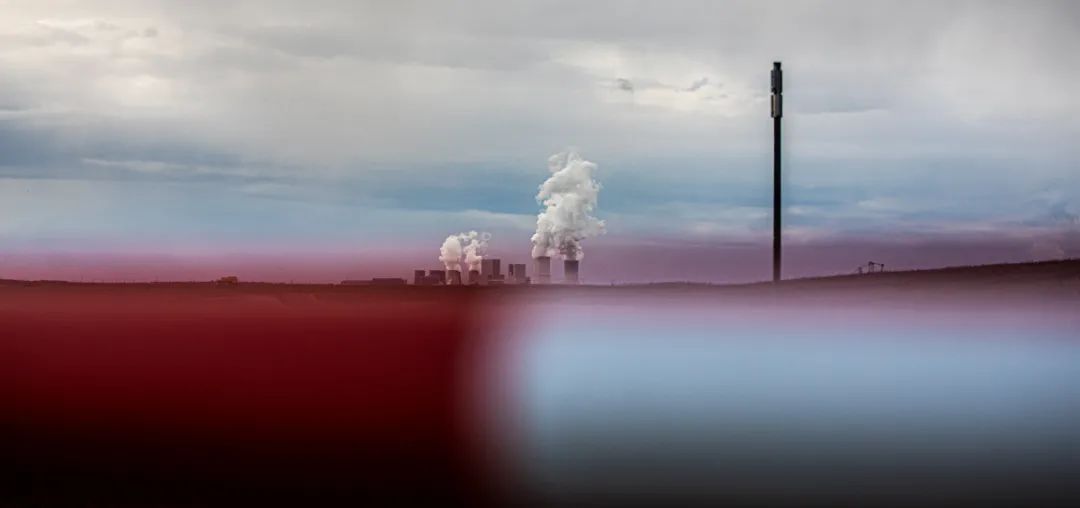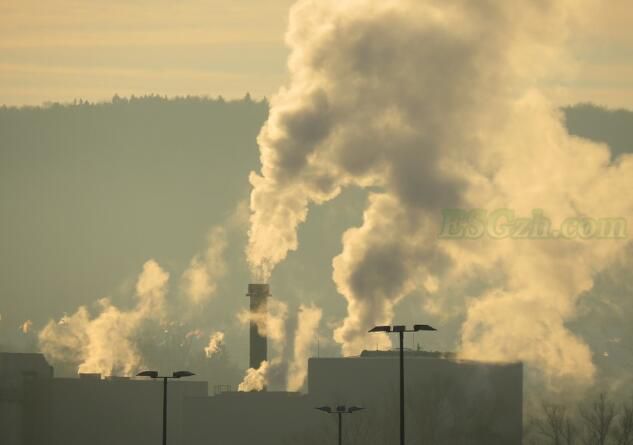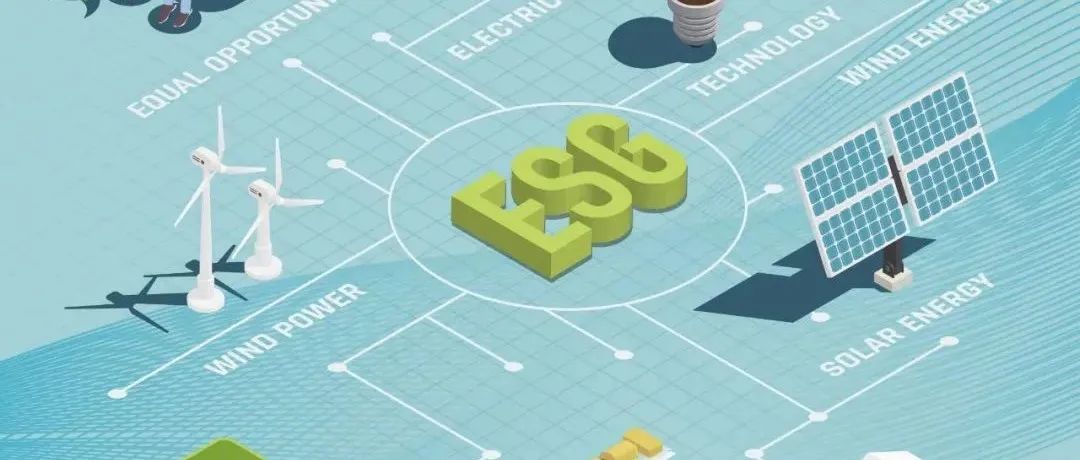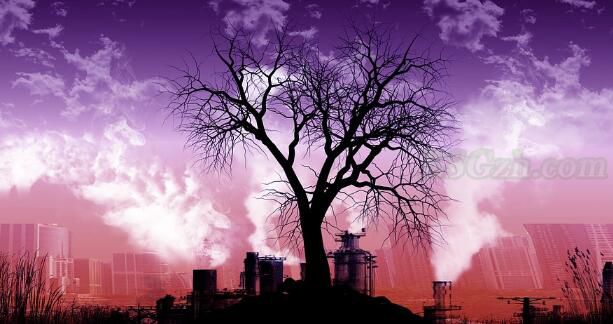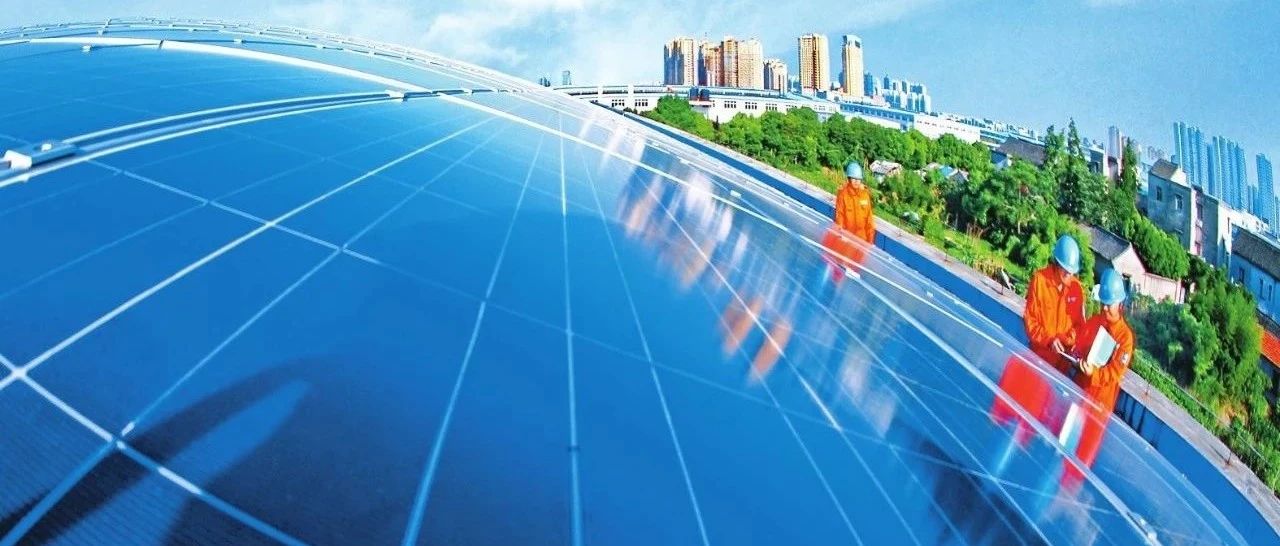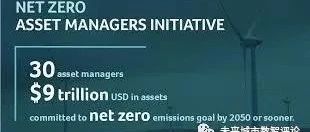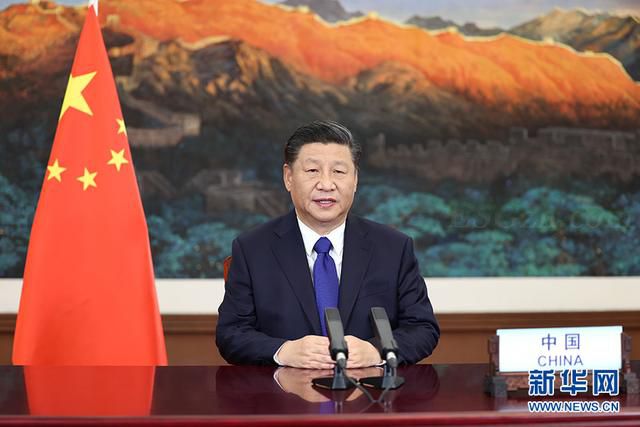当前位置:
首页 >
可持续发展>新冠肺炎很可怕,但气候变化可能更糟 | 盖茨笔记>正文
新冠肺炎很可怕,但气候变化可能更糟 | 盖茨笔记
作者:Bill Gates 时间:2020-08-19

A global crisis has shocked the world. It is causing a tragic number of deaths, making people afraid to leave home, and leading to economic hardship not seen in many generations. Its effects are rippling across the world.
一场全球危机震惊了世界。它正在造成大量的死亡,人们因此不敢离开家。它还在造成过去几代人都没有见过的经济困难。这场危机的影响正波及全世界。
Obviously, I am talking about COVID-19. But in just a few decades, the same description will fit another global crisis: climate change. As awful as this pandemic is, climate change could be worse.显然,我说的是新冠肺炎。但是在未来的数十年中,这些描述将适用于另一场全球危机——气候变化。新冠疫情很可怕,但气候变化可能更糟。
I realize that it’s hard to think about a problem like climate change right now. When disaster strikes, it is human nature to worry only about meeting our most immediate needs, especially when the disaster is as bad as COVID-19. But the fact that dramatically higher temperatures seem far off in the future does not make them any less of a problem—and the only way to avoid the worst possible climate outcomes is to accelerate our efforts now. Even as the world works to stop the novel coronavirus and begin recovering from it, we also need to act now to avoid a climate disaster by building and deploying innovations that will let us eliminate our greenhouse gas emissions.我明白当下我们很难去考虑像气候变化这样的问题。当灾难来袭时,人类的天性是专注于眼前最迫切的需求,尤其是在面对像新冠肺炎这样严重灾难的时候。然而,急剧上升的气温看起来可能离我们很遥远,但这并不会减轻这一问题对我们的影响。为了避免可能出现的最坏后果,唯一的方式就是现在加倍投入。即便全世界正致力于控制疫情和开始从中恢复,我们也需要立即采取行动,通过建立和部署消除温室气体排放的创新方法来避免气候灾难。
You may have seen projections that, because economic activity has slowed down so much, the world will emit fewer greenhouse gases this year than last year. Although these projections are certainly true, their importance for the fight against climate change has been overstated.你们可能已经看到一些预测,由于经济活动大大放缓,今年全球的温室气体排放量将比去年少。尽管这些预测是正确的,但其对于抗击气候变化的重要性被夸大了。
Analysts disagree about how much emissions will go down this year, but the International Energy Agency puts the reduction around 8 percent. In real terms, that means we will release the equivalent of around 47 billion tons of carbon, instead of 51 billion.专家们对于今年将减少多少温室气体排放量存在分歧,但国际能源署(International Energy Agency)认为减排量会在8%左右。按实质计算,这意味着我们今年将排放相当于约470亿吨的碳,而不是510亿吨。
That’s a meaningful reduction, and we would be in great shape if we could continue that rate of decrease every year. Unfortunately, we can’t.这是个有意义的下降。如果我们每年能够保持这样的减排速度,我们将会处于一个良好状态。不幸的是,我们做不到。
Consider what it’s taking to achieve this 8 percent reduction. More than 600,000 people have died, and tens of millions are out of work. This April, car traffic was half what it was in April 2019. For months, air traffic virtually came to a halt.想一想为了实现这8%的减排量所付出的代价。超过六十万人死亡,数千万人失业。今年四月,汽车交通量仅为2019年四月的一半。在过去的数月,航空交通几乎陷入停滞。
What’s remarkable is not how much emissions will go down because of the pandemic, but how little.To put it mildly, this is not a situation that anyone would want to continue. And yet we are still on track to emit 92 percent as much carbon as we did last year. What’s remarkable is not how much emissions will go down because of the pandemic, but how little.说得婉转些,这不是一个大家想要延续的情况。但是,我们今年的碳排放量仍将达到去年的92%。值得注意的不是疫情将导致排放量下降多少,而是降得多么少。
In addition, these reductions are being achieved at, literally, the greatest possible cost.更何况,为了实现这些减排,人类社会付出了最大可能的代价。
To see why, let’s look at what it costs to avert a single ton of greenhouse gases. This figure—the cost per ton of carbon averted—is a tool that economists use to compare the expense of different carbon-reduction strategies. For example, if you have a technology that costs $1 million, and using it lets you avert the release of 10,000 tons of gas, you’re paying $100 per ton of carbon averted. In reality, $100 per ton would still be pretty expensive. But many economists think this price reflects the true cost of greenhouse gases to society, and it also happens to be a memorable round number that makes a good benchmark for discussions.要了解这背后原因,让我们看看减少一吨温室气体排放所需的成本。这个数字(每减少一吨碳排放所需的成本)是经济学家用来比较不同减碳策略成本的工具。例如,如果你有一项耗资100万美元研发的技术,而使用该技术可以减少排放1万吨温室气体,那么每减少1吨碳排放就要耗费100美元。实际上,每吨100美元仍然非常昂贵。但许多经济学家认为,这个价格反映了温室气体对人类社会的真实成本,而且它恰好是一个容易让人记住的整数,为大家讨论这个问题提供了一个良好的基准。
Now let’s treat the shutdown caused by COVID-19 as if it were a carbon-reduction strategy. Has closing off major parts of the economy avoided emissions at anything close to $100 per ton?现在,让我们把新冠疫情造成的经济停摆视为一种减排策略。由关闭大部分经济而避免的碳排放,其成本是否接近于每吨100美元?
No. In the United States, according to data from the Rhodium Group, it comes to between $3,200 and $5,400 per ton. In the European Union, it’s roughly the same amount. In other words, the shutdown is reducing emissions at a cost between 32 and 54 times the $100 per ton that economists consider a reasonable price.并不是。在美国,根据荣鼎咨询(Rhodium Group)的数据,其成本在每吨3200至5400美元之间。在欧盟,这一数字大致与美国相同。换句话说,新冠疫情造成的停摆的确减少了碳排放,但其成本是每吨100美元这一经济学家认为合理成本的32到54倍。
To understand the kind of damage that climate change will inflict, look at COVID-19 and spread the pain out over a much longer period.如果想理解气候变化将造成怎样的损害,就看看新冠疫情,然后将其造成痛苦的时间延长。If you want to understand the kind of damage that climate change will inflict, look at COVID-19 and spread the pain out over a much longer period of time. The loss of life and economic misery caused by this pandemic are on par with what will happen regularly if we do not eliminate the world’s carbon emissions.你如果想理解气候变化将造成怎样的损害,就看看新冠疫情,然后将其造成痛苦的时间延长。如果我们不消除世界上的碳排放,它所造成的周期性破坏与这种流行病造成的生命和经济损失相当。
Let’s look first at the loss of life. How many people will be killed by COVID-19 versus by climate change? Because we want to compare events that happen at different points in time—the pandemic in 2020 and climate change in, say, 2060—and the global population will change in that time, we can’t compare the absolute numbers of deaths. Instead we will use the death rate: that is, the number of deaths per 100,000 people.让我们首先来看看生命的损失。新冠肺炎和气候变化会杀死多少人?因为我们比较的是两件发生在不同时间的事件(2020年的大流行和假设2060年的气候变化),并且那个时候全球人口也会发生变化,所以我们无法比较绝对的死亡人数。因此,我们将用死亡率代替:即每10万人中的死亡数。
As of last week, more than 600,000 people are known to have died from COVID-19 worldwide. On an annualized basis, that is a death rate of 14 per 100,000 people.截至上周,全球已有超过60万人死于新冠肺炎。按年计算,死亡率约为十万分之14。
How does that compare to climate change? Within the next 40 years, increases in global temperatures are projected to raise global mortality rates by the same amount—14 deaths per 100,000. By the end of the century, if emissions growth stays high, climate change could be responsible for 73 extra deaths per 100,000 people. In a lower emissions scenario, the death rate drops to 10 per 100,000.气候变化与之相比结果怎样?在未来四十年内,预计全球气温升高将使全球死亡率增加相同的数量,即十万分之14。到本世纪末,如果碳排放量增速依旧很快,气候变化将导致每10万人中的73人死亡。在碳排放量较低的情况下,死亡率会降至十万分之10。
In other words, by 2060, climate change could be just as deadly as COVID-19, and by 2100 it could be five times as deadly.换句话说,到2060年,气候变化可能像新冠肺炎一样致命,而到2100年,气候变化的致命性可能达到新冠肺炎的五倍。
The economic picture is also stark. The range of likely impacts from climate change and from COVID-19 varies quite a bit, depending on which economic model you use. But the conclusion is unmistakable: In the next decade or two, the economic damage caused by climate change will likely be as bad as having a COVID-sized pandemic every ten years. And by the end of the century, it will be much worse if the world remains on its current emissions path.对经济的影响也很严峻。气候变化和新冠肺炎可能产生的影响范围差异很大。这取决于你使用的经济模型。但是结论却很清楚:在未来的一二十年里,气候变化造成的经济损失相当于每十年暴发一次与新冠肺炎相当的大流行。如果世界仍保持目前的排放方式,到本世纪末,情况将更加糟糕。
(If you’re curious, here is the math. Recent models suggest that the cost of climate change in 2030 will likely be roughly 1 percent of America's GDP per year. Meanwhile, current estimates for the cost of COVID-19 to the United States this year range between 7 percent and 10 percent of GDP. If we assume that a similar disruption happens once every ten years, that's an average annual cost of 0.7 percent to 1 percent of GDP—roughly equivalent to the damage from climate change.)(如果你对此好奇,这里有计算方式。最近的模型表明,2030年气候变化造成的损失约为美国每年国内生产总值的1%。同时,目前美国新冠肺炎疫情造成的损失估计约为今年国内生产总值的7%到10%。如果我们假设每十年发生一次类似的疫情,那么平均每年造成的损失就占国内生产总值的0.7到1%,大致相当于气候变化每年造成的损失。)
If we learn the lessons of COVID-19, we can approach climate change more informed about the consequences of inaction.如果我们从新冠肺炎中汲取了教训,在对待气候变化时,我们就应该更加清楚不作为会造成怎样的后果。The key point is not that climate change will be disastrous. The key point is that, if we learn the lessons of COVID-19, we can approach climate change more informed about the consequences of inaction, and more prepared to save lives and prevent the worst possible outcome. The current global crisis can inform our response to the next one.我想表达的关键不是气候变化会造成灾难性的后果。关键是,如果我们从新冠肺炎中汲取了教训,在对待气候变化时,我们就应该更加清楚不作为会造成怎样的后果,也会更加准备好去挽救生命和防止最坏的结果。当前的全球危机可以帮助我们更好地准备应对下一场危机。
In particular, we should:Let science and innovation lead the way. The relatively small decline in emissions this year makes one thing clear: We cannot get to zero emissions simply—or even mostly—by flying and driving less.让科学与创新引领方向。今年碳排放量只有小幅度的下降清楚地表明了一件事:我们不可能简单地通过减少航空和汽车出行来实现完全的(哪怕是大部分的)零排放。
Of course, cutting back is a good thing for those who can afford to do it, as I can. And I believe that many people will use teleconferencing to replace some business travel even after the pandemic is over. But overall, the world should be using more energy, not less—as long as it is clean.当然,对那些能够负担得起这么做的人来说,减少航空和汽车出行是一件好事。我相信,即使在大流行结束后,许多人仍会用视频电话会议取代某些商务旅行。但是总的来说,世界应该使用更多能源,而不是更少——只要这是清洁能源。
So just as we need new tests, treatments, and vaccines for the novel coronavirus, we need new tools for fighting climate change: zero-carbon ways to produce electricity, make things, grow food, keep our buildings cool and warm, and move people and goods around the world. And we need new seeds and other innovations to help the world’s poorest people—many of whom are smallholder farmers—adapt to a less predictable climate.因此,就像我们需要针对新冠肺炎的新检测手段、新疗法和新疫苗一样,我们也需要应对气候变化的新工具——不会产生碳排放的发电、工业生产、食物种植、室内温度调节以及运输人员和货物的方式。我们需要新品种的种子和其他创新技术手段,从而帮助世界上最贫困的人(这其中许多人是只拥有少量耕地的农户)适应更加难以预测的气候。
Any comprehensive response to climate change will have to tap into many different disciplines. Climate science tells us why we need to deal with this problem, but not how to deal with it. For that, we’ll need biology, chemistry, physics, political science, economics, engineering, and other sciences.任何应对气候变化的综合方案都必须结合许多不同的学科。气候科学可以告诉我们为什么需要重视气候变化问题,但不可能告诉我们如何来解决这个问题。为此,我们需要生物学、化学、物理学、政治学、经济学、工程学和其他学科。
Make sure solutions work for poor countries too. We don’t yet know exactly what impact COVID-19 will have on the world’s poorest people, but I am concerned that by the time this is over, they will have had the worst of it. The same goes for climate change. It will hurt the poorest people in the world the most.确保解决方案也适用于贫穷国家。我们尚不知道新冠疫情对世界上最贫穷的人会有什么影响,但我担心的是,当疫情结束后他们将遭受最严重的影响。气候变化也是如此。它将会对世界上最贫穷的人伤害最大。
Consider climate’s impact on death rates. According to a recent study published by Climate Impact Lab, although climate change will push the overall death rate up globally, the overall average will obscure an enormous disparity between rich and poor countries. More than anywhere else, climate change will dramatically increase death rates in poor countries near or below the Equator, where the weather will get even hotter and more unpredictable.我们来看气候变化对死亡率的影响。根据气候变化研究机构气候影响实验室(Climate Impact Lab)发布的一项最新研究,尽管气候变化将使全球整体死亡率上升,但只讨论总体平均死亡率将掩盖富国和穷国之间的巨大差距。在赤道附近或赤道以南的贫穷国家,将比地球上其他任何地方受到更大的影响。气候变化会大大增加这些国家的死亡率,那里的天气将变得更加炎热且更加不可预测。
The economic pattern will probably be similar: a modest drop in global GDP, but massive declines in poorer, hotter countries. 经济上的影响也可能遵循这个规律:全球生产总值略有下降,但更贫穷、更炎热的国家会出现国民生产总值大幅下降。
In other words, the effects of climate change will almost certainly be harsher than COVID-19's, and they will be the worst for the people who did the least to cause them. The countries that are contributing the most to this problem have a responsibility to try to solve it.换句话说,气候变化的影响几乎肯定会比新冠肺炎的影响更严重。那些对造成气候变化问题责任最小的人,将会遭受最严重的影响。对此问题责任最大的国家有义务设法去解决它。
In addition, clean sources of energy need to be cheap enough so that low- and middle-income countries can buy them. These nations are looking to grow their economies by building factories and call centers; if this growth is powered by fossil fuels—which are now the most economical option by far—it will be even harder to get to zero emissions.另外,清洁能源需要足够便宜,从而让中低收入国家也能购买。这些国家正希望通过建立工厂和呼叫中心来发展经济。如果这种增长都由化石燃料推动(因为化石燃料是目前为止最经济的选择),那么实现零排放将更加困难。
When there’s a vaccine for the coronavirus, organizations like GAVI will be ready to make sure it reaches the poorest people in the world. But there is no GAVI for clean energy. So governments, inventors, and entrepreneurs around the world need to focus on making green technologies cheap enough that developing countries will not only want them, but be able to afford them.当新冠肺炎疫苗出现时,像全球疫苗免疫联盟(GAVI)这样的组织将确保世界上最贫穷的人口得到疫苗。但是清洁能源领域的GAVI还没有出现。因此,世界各地的政府、发明家和企业家都需要努力使绿色科技足够便宜,从而让发展中国家不仅想使用这些技术,并且能够负担得起。
Start now. Unlike the novel coronavirus, for which I think we’ll have a vaccine next year, there is no two-year fix for climate change. It will take decades to develop and deploy all the clean-energy inventions we need.现在就开始行动。与新冠病毒不同(我认为我们明年就会有针对这一病毒的疫苗),我们没有任何在两年内就能解决气候变化问题的方案。这可能需要数十年的时间来开发和部署所有我们需要的清洁能源发明。
We need to create a plan to avoid a climate disaster—to use the zero-carbon tools we have now, develop and deploy the many innovations we still need, and help the poorest adapt to the temperature increase that is already locked in. Although I am spending most of my time these days on COVID-19, I am still investing in promising new clean energy technologies, building programs that will help innovations scale around the world, and making the case that we need to invest in solutions that will limit the worst impacts of climate change.我们需要制定一个避免气候灾难的计划——使用我们已有的零碳工具,开发及部署许多我们仍旧需要的创新,以及帮助最贫困人口适应已经无法避免的气温上升。尽管最近一段时间我花了大部分时间在新冠肺炎上,但我仍然在投资具有前景的新清洁能源技术,建立有助于创新在全球大范围应用的项目,以及解释为何我们需要投资可以限制气候变化最坏影响的解决方案。
Some governments and private investors are committing the funding and the policies that will help us get to zero emissions, but we need even more to join in. And we need to act with the same sense of urgency that we have for COVID-19.一些政府和私人投资者正在为实现零排放制定政策或承诺提供资金,但我们需要更多人的加入。在应对气候变化的行动上,我们需要有与面对新冠肺炎时同样的紧迫感。
Health advocates said for years that a pandemic was virtually inevitable. The world did not do enough to prepare, and now we are trying to make up for lost time. This is a cautionary tale for climate change, and it points us toward a better approach. If we start now, tap into the power of science and innovation, and ensure that solutions work for the poorest, we can avoid making the same mistake with climate change.卫生倡导者多年来一直表示,大流行几乎是不可避免的。世界并没有做好足够的准备,而我们现在正试图去弥补失去的时间。这对气候变化是一个警示,也为我们指出一种更好的应对方法。如果我们现在就开始,利用科学和创新的力量,并确保这些解决方案同样适用于最贫困的人口,我们就能避免在气候变化问题上犯同样的错误。

- 本文地址:http://www.esgzh.com/SustainableDevelopment/1244.html

